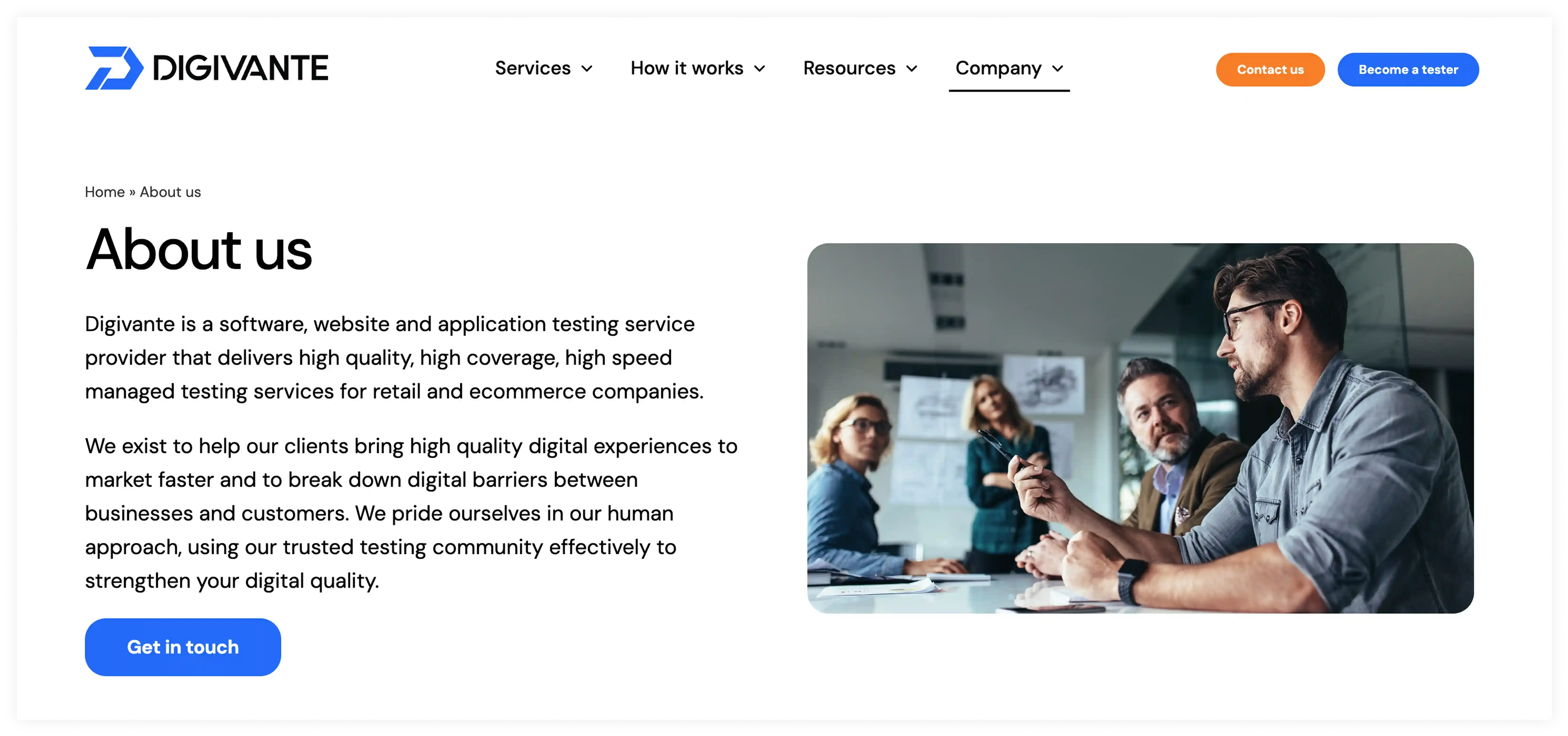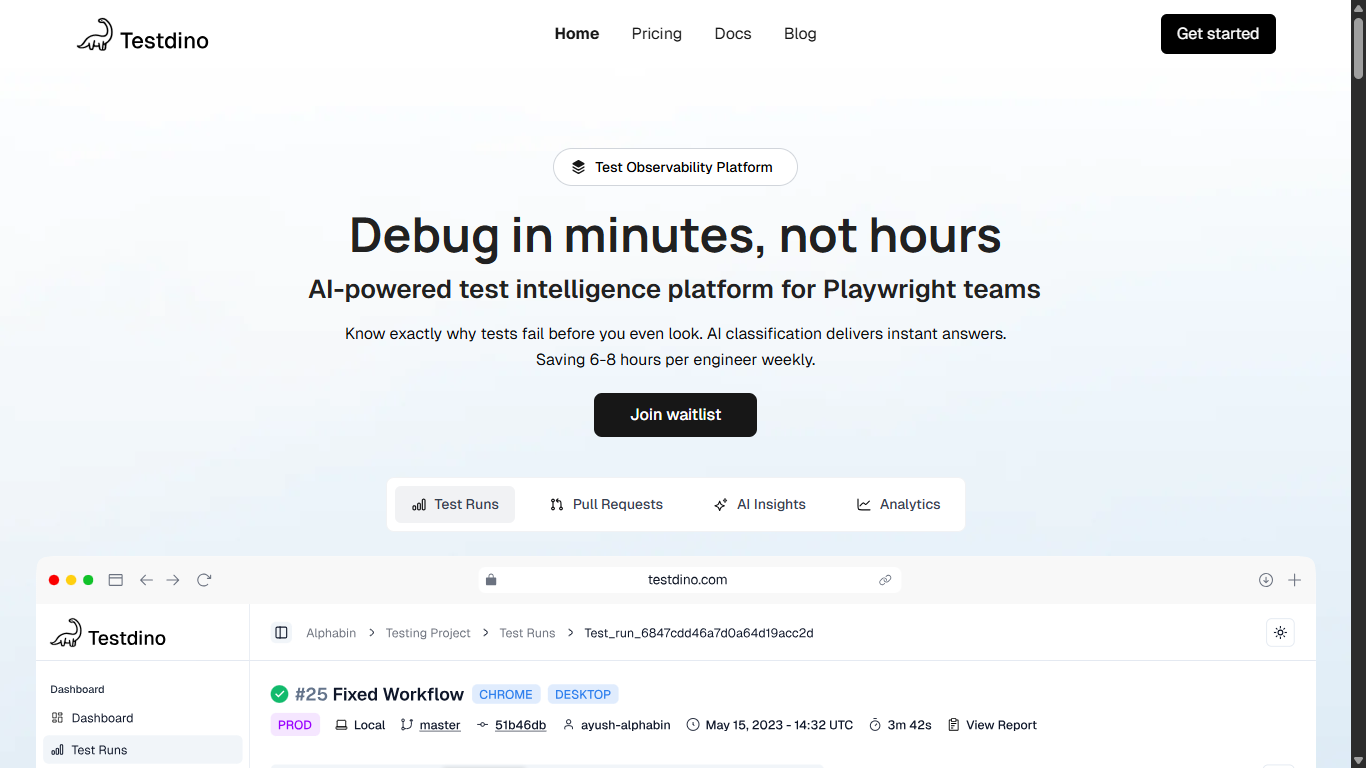Manual testing coordination delays cost enterprises an average of 24-48 hours per release cycle. When development teams push code multiple times daily, waiting for crowdtesters to wake up across time zones breaks deployment velocity.
Modern QA demands instant feedback. Teams running continuous deployment need platforms that combine AI automation with human insight to catch bugs in minutes, not days. The key features modern QA platforms should offer include automation, speed, and comprehensive coverage.
This comparison reviews Digivante and leading alternatives, showing why Alphabin’s AI-powered approach delivers 80% test coverage in months while cutting QA costs by 30-50%, positioning Alphabin and its competitors as effective solutions for modern QA challenges.
{{blog-cta-1}}
Why Companies Seek Digivante Alternatives
1. Limited Automation and AI Maturity
Digivante primarily leverages human testers to provide real-world feedback. While they offer some automation, it’s primarily focused on regression testing and may not include advanced capabilities such as self-healing or AI-based test generation.
In contrast, modern platforms like Alphabin use GenAI to create tests from plain language descriptions.
2. Crowd-Tester Quality and Consistency Challenges
While global crowds bring diversity, ensuring consistent domain-specific understanding can be more complex compared to dedicated QA teams.
The crowdtesting model focuses on executing predefined scripts, which can be effective for exploratory feedback but may not offer proactive insights based on code changes or historical trends.
3. Pricing Unpredictability and Scalability Issues
Digivante’s custom quote structure may not align well with teams running high test volumes, where predictability and scalability in pricing are key. Companies practicing continuous deployment face exponentially growing QA bills without corresponding quality improvements.
{{cta-image}}
4. Platform Coverage Gaps on Real Devices
While Digivante excels at e-commerce and web testing, it struggles with modern testing needs. Mobile app testing relies entirely on manual testers.
While Digivante offers strong web and usability testing, teams requiring device-level coverage or parallel execution may need to evaluate additional tooling
Teams building complex applications across web, mobile, and API layers need comprehensive coverage that Digivante may not provide efficiently.
Digivante vs. Alphabin
Alphabin: Key Features and Differentiators for 2025 Testing
1. AI-driven speed and modern testing integration
TestGenX, our proprietary tool, transforms how teams create automated tests. It turns user actions into clean Playwright tests in seconds and helps us to generate end-to-end (E2E) tests at scale
Record a user flow once, and AI generates comprehensive test suites covering edge cases, data variations, and cross-browser scenarios. Our AI-driven approach reduces execution time significantly by automating test coverage generation, ideal for teams aiming for faster release cycles.
See TestGenX in action:
Watch how TestGenX converts browser interactions into production-ready Playwright tests with intelligent locator detection and automatic assertions.
Experience AI-powered test intelligence:
See how natural language test creation works with multi-model LLM support for generating complex test scenarios without coding.
Unlike crowdtesting coordination, our AI agents work continuously. They generate regression tests the moment code merges, catch visual regressions through screenshot comparison, and adapt when developers move buttons or change workflows.
Self-Healing:
Watch how TestGenX automatically adapts when UI elements change, maintaining test stability without manual intervention.
Our dual-layer approach captures visual snapshots and DOM structure. When elements move or styling changes, tests adapt automatically.
2. Long-term partnership and proactive support
While Digivante offers scalable access to testers, Alphabin complements that model with proactive guidance and long-term QA strategy alignment.
Our QA architects review your testing strategy weekly, identifying optimization opportunities before you ask. When test execution slows, we proactively suggest parallelization improvements. When failure rates spike, we correlate changes and recommend fixes.
This partnership extends beyond finding bugs. We help design your entire quality strategy, implement shift-left practices, and build testing into your development culture.
3. End-to-end coverage across platforms and mobile apps
Modern applications span multiple platforms and technologies. Digivante’s web-centric approach misses critical integration points.
Alphabin tests every layer:
- Websites and Web Applications: Cross-browser testing with visual regression
- Mobile Apps: Native iOS/Android testing plus responsive web
- APIs: Contract testing, performance validation, security scanning
- Microservices: Service mesh testing and dependency validation
- IoT Devices: Hardware integration and edge case testing
This comprehensive coverage catches bugs at integration points where platform-specific testing fails.
4. AI-powered reporting and analytics
Raw test results don't drive decisions. Intelligence does.
{{blog-cta-3}}
{{cta-image-second}}
5. Modern QA Agents and Automated Testing
The future of QA uses AI agents that understand testing intent. Describe a user journey in plain English. AI generates comprehensive test coverage, including happy paths, error states, and edge cases.
These agents don't just execute tests. They maintain test suites as applications evolve, categorize failures by root cause, and suggest optimizations based on execution patterns.
When UI elements move, visual diff engines detect changes and update locators automatically. No manual maintenance. No broken tests. Just continuous validation.
6. Continuous Testing in CI/CD Pipelines
For teams practicing continuous integration, a mix of manual and automated validation can help reduce bottlenecks. Alphabin’s model supports that hybrid approach.
Alphabin integrates directly into your pipeline:
- GitHub Actions: Tests run on every pull request
- Jenkins: Parallel execution across build farms
- GitLab CI: Merge request annotations with test results
- Azure DevOps: Full test plan integration
Tests execute in minutes, not hours. Results appear directly in your workflow. No context switching. No waiting for crowds.
The Clear Choice for Scalable QA in 2025
{{blog-cta-2}}
Other Alternatives to Consider
QA Wolf promises 80% E2E test coverage within 4 months through their managed service model. They use Playwright exclusively and maintain tests for you. However, pricing runs $90,000-$180,000 annually, making them expensive for smaller teams. Best for well-funded startups needing hands-off automation. See our full comparison of QA Wolf alternatives.
Rainforest QA combines no-code test creation with crowd validation. Their visual editor makes test creation accessible to non-technical users. But limited mobile support and usage-based pricing create scaling challenges. Works well for simple web applications. Take a look at Rainforest QA alternatives.
Testlio operates a vetted network of professional testers with some automation capabilities. They achieve strong exploratory testing results but remain primarily manual. Pricing stays opaque, and coverage focuses on user experience over technical validation. Learn more about Testlio and its alternatives.
Test IO provides on-demand crowdtesting through their EPAM partnership. Quick test activation and detailed bug reports make them responsive. Yet the manual-heavy approach and per-test pricing model don’t suit continuous deployment needs. For more information, check out our blog.
Applause pioneered crowdtesting with the largest tester network globally. Enterprise clients appreciate their scale and device coverage. Still, they lack significant AI automation, and costs escalate quickly for frequent testing needs. Check the Applause alternatives for further details
Ready to accelerate your QA velocity? Get Your Free QA Assessment!



.svg)











.png)
